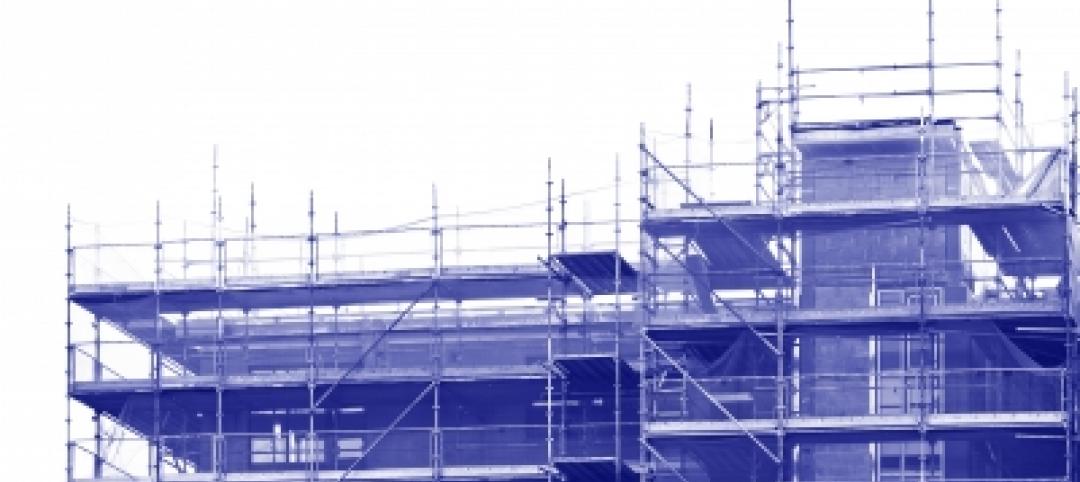For the better part of a decade, we’ve watched AEC firms and real estate owners and developers pluck business practices, technology, and talent from the tech and manufacturing industries—digital workflows, automation, innovation competitions, hackathons, maker culture, Lean operations, technologies like predictive analytics, AI, and immersive reality.
AEC “outsiders” hold prominent positions in large firms, with titles like Chief Data Officer and Chief Innovation Officer. Firms are angel investors, startup backers, and purveyors of custom-built software tools and tech platforms. They are exploring real-world applications for nascent technologies like digital twin, blockchain, and haptics for VR. They are backing or launching increasingly sophisticated offsite construction enterprises.
Indeed, the nation’s leading design and construction firms have embraced innovation culture in a big way—whether through formal structured processes or departments (still rare in our market), or an R&D “tinker” approach (much more common).
As firms begin to adopt the practices and mindset of Silicon Valley tech and advanced manufacturing, it’s fair to ask: Are all of these innovation projects and initiatives working? More to the point: Does your firm track the success rate of its innovation projects?
If you do, and your success rate is 50% or greater, guess what? You are faring much better than many of the tech firms that we collectively hold up on a pedestal as leading innovators. A new survey, conducted by Oracle, of more than 5,000 decision makers across 24 markets in software development and cloud solutions found that less than half of innovation projects ever make it to market. And it is the biggest firms (workforces up to 50,000) and the fastest-growing companies that struggle the most.
Survey respondents cited a host of reasons for the less-than-ideal “hit rate” on innovation projects: poor processes, lack of focus, absentee leadership, an over-commitment on the number of innovation projects, and an insufficient commitment from the business.
Another glaring issue: a lack of clear ownership. Executives (48%) and IT (46%) were identified as the most common owners of projects, but a variety of other functions were identified as champions in near-equal proportions, between 35% and 41%, according to the survey.
“Employees will always be a critical factor in any innovation program, but they need an effective and supporting culture of innovation to be successful,” said Neil Sholay, Oracle’s VP of Innovation. “This starts with a clear vision from leaders and the prioritization and funding of chosen projects.”
While the Oracle report is somewhat of an apples-and-oranges comparison to AEC, the survey findings demonstrate that even the most finely tuned organizations struggle to innovate.
Download the key takeaways of Oracle’s “Having a Successful Innovation Agenda” report at: tinyurl.com/yxathbeg.
Related Stories
| Jun 3, 2011
BIM software helps Michigan college students improve building performance
With Autodesk Revit Architecture, Western Michigan University students model campus buildings for energy analysis, renovations and retrofits
| May 10, 2011
Solar installations on multifamily rooftops aid social change
The Los Angeles Business Council's study on the feasibility of installing solar panels on the city’s multifamily buildings shows there's tremendous rooftop capacity, and that a significant portion of that rooftop capacity comes from buildings in economically depressed neighborhoods. Solar installations could therefore be used to create jobs, lower utility costs, and improve conditions for residents in these neighborhood.
| Mar 10, 2011
Taking ‘PIM’ Beyond E-mail
Newforma enhances its Project Center information management platform with a Revit add-in’ and mobile capability.
| Feb 10, 2011
Medical Data Center Sets High Bar for BIM Design Team
The construction of a new data center becomes a test case for BIM’s ability to enhance project delivery across an entire medical campus.
| Feb 10, 2011
Zero Energy Buildings: When Do They Pay Off in a Hot and Humid Climate?
There’s lots of talk about zero energy as the next big milestone in green building. Realistically, how close are we to this ambitious goal? At this point, the strategies required to get to zero energy are relatively expensive. Only a few buildings, most of them 6,000 sf or less, mostly located in California and similar moderate climates, have hit the mark. What about larger buildings, commercial buildings, more problematic climates? Given the constraints of current technology and the comfort demands of building users, is zero energy a worthwhile investment for buildings in, for example, a warm, humid climate?
| Jan 28, 2011
Firestone Building Products Unveils FirestoneRoof Mobile Web App
Firestone Building Products Company unveiled FirestoneRoof, a first-of-its-kind free mobile web app. The FirestoneRoof mobile web app enables customers to instantly connect with Firestone commercial roofing experts and is designed to make it easier for building owners, facility managers, roofing consultants and others charged with maintaining commercial roofing systems to get the support they need, when they need it.
| Jan 25, 2011
Bloomberg launches NYC Urban Tech Innovation Center
To promote the development and commercialization of green building technologies in New York City, Mayor Michael R. Bloomberg has launched the NYC Urban Technology Innovation Center. This initiative will connect academic institutions conducting underlying research, companies creating the associated products, and building owners who will use those technologies.
| Jan 19, 2011
Large-Scale Concrete Reconstruction Solid Thinking
Driven by both current economic conditions and sustainable building trends, Building Teams are looking more and more to retrofits and reconstruction as the most viable alternative to new construction. In that context, large-scale concrete restoration projects are playing an important role within this growing specialty.














